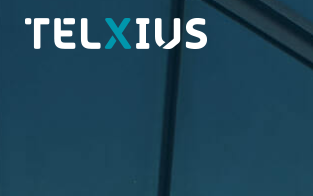A new open source software is gaining traction as a design tool for planning and assessing optical transport networks.
GNPy (Gaussian Noise model in Python), which was developed in the framework of the Telecom Infra Project's Open Optical and Packet Transport Group, can be used to help to compare vendors’ solutions. Orange was a primary contributor to GNPy and has used the software during recent RFPs, including for its West African backbone project to benchmark and challenge bidders' designs.
https://telecominfraproject.com/orange-steps-towards-open-optical-networks-with-gnpy/
GNPy (Gaussian Noise model in Python), which was developed in the framework of the Telecom Infra Project's Open Optical and Packet Transport Group, can be used to help to compare vendors’ solutions. Orange was a primary contributor to GNPy and has used the software during recent RFPs, including for its West African backbone project to benchmark and challenge bidders' designs.
https://telecominfraproject.com/orange-steps-towards-open-optical-networks-with-gnpy/
Orange to assemble West African backbone
Orange will assemble a new international backbone serving West Africa by building a terrestrial fiber optic network coupled with submarine cables.
Orange said its new network will provide large-scale international capacity to the rest of the world via connections with other submarine cables. The new network will link up all the main capital cities in the region: Dakar, Bamako, Abidjan, Accra, and Lagos. Commercial launch of the West African backbone is planned for the second quarter of 2020.
Alioune Ndiaye, CEO of Orange Middle East and Africa, said: “For Orange, this West African backbone network represents a major investment that will secure availability of international connectivity and will enable us to meet the demand for increased bandwidth necessary for the continued digital development of regions within the zone.”
Jérôme Barré, CEO of Orange Wholesale and International Networks, said: “Through this project, Orange is clearly demonstrating its leadership and expertise in the design, deployment and operation of international network infrastructure. We are delighted to be able to offer our West African customers’ reliable, secure and high-quality international connectivity that connects them to the rest of the world.”
Orange is an investor in the MainOne submarine cable connecting Senegal and Côte d’Ivoire to Europe.
https://www.orange.com/en/Press-Room/press-releases/press-releases-2019/Orange-accelerates-the-development-of-connectivity-in-Africa-with-a-new-secure-international-network-connecting-eight-countries-in-West-Africa
Orange said its new network will provide large-scale international capacity to the rest of the world via connections with other submarine cables. The new network will link up all the main capital cities in the region: Dakar, Bamako, Abidjan, Accra, and Lagos. Commercial launch of the West African backbone is planned for the second quarter of 2020.
Alioune Ndiaye, CEO of Orange Middle East and Africa, said: “For Orange, this West African backbone network represents a major investment that will secure availability of international connectivity and will enable us to meet the demand for increased bandwidth necessary for the continued digital development of regions within the zone.”
Jérôme Barré, CEO of Orange Wholesale and International Networks, said: “Through this project, Orange is clearly demonstrating its leadership and expertise in the design, deployment and operation of international network infrastructure. We are delighted to be able to offer our West African customers’ reliable, secure and high-quality international connectivity that connects them to the rest of the world.”
Orange is an investor in the MainOne submarine cable connecting Senegal and Côte d’Ivoire to Europe.
https://www.orange.com/en/Press-Room/press-releases/press-releases-2019/Orange-accelerates-the-development-of-connectivity-in-Africa-with-a-new-secure-international-network-connecting-eight-countries-in-West-Africa
New branches to extend MainOne cable to Cote D’Ivoire and Senegal
Two additional branches are planned to extend MainOne’s subsea cable system to Dakar (Senegal) and Abidjan (Cote D’Ivoire). With this development, MainOne will have landing points in five markets – Nigeria, Ghana, Senegal, Cote D’Ivoire and Portugal, in addition to Cameroon.
 MainOne, which is a 7,000km cable system that spans from Portugal to Nigeria, entered service in 2010. Technology updates will boost potential capacity to 10 TBps of capacity. The upgrades are expected to become operational in November 2019.
MainOne, which is a 7,000km cable system that spans from Portugal to Nigeria, entered service in 2010. Technology updates will boost potential capacity to 10 TBps of capacity. The upgrades are expected to become operational in November 2019.
TE SubCom is lead contractor on the project. MainOne has also selected SubCom’s WSS ROADM for the new branches. SubCom will light the new branches with Ciena’s transmission equipment.
 MainOne, which is a 7,000km cable system that spans from Portugal to Nigeria, entered service in 2010. Technology updates will boost potential capacity to 10 TBps of capacity. The upgrades are expected to become operational in November 2019.
MainOne, which is a 7,000km cable system that spans from Portugal to Nigeria, entered service in 2010. Technology updates will boost potential capacity to 10 TBps of capacity. The upgrades are expected to become operational in November 2019.TE SubCom is lead contractor on the project. MainOne has also selected SubCom’s WSS ROADM for the new branches. SubCom will light the new branches with Ciena’s transmission equipment.



















